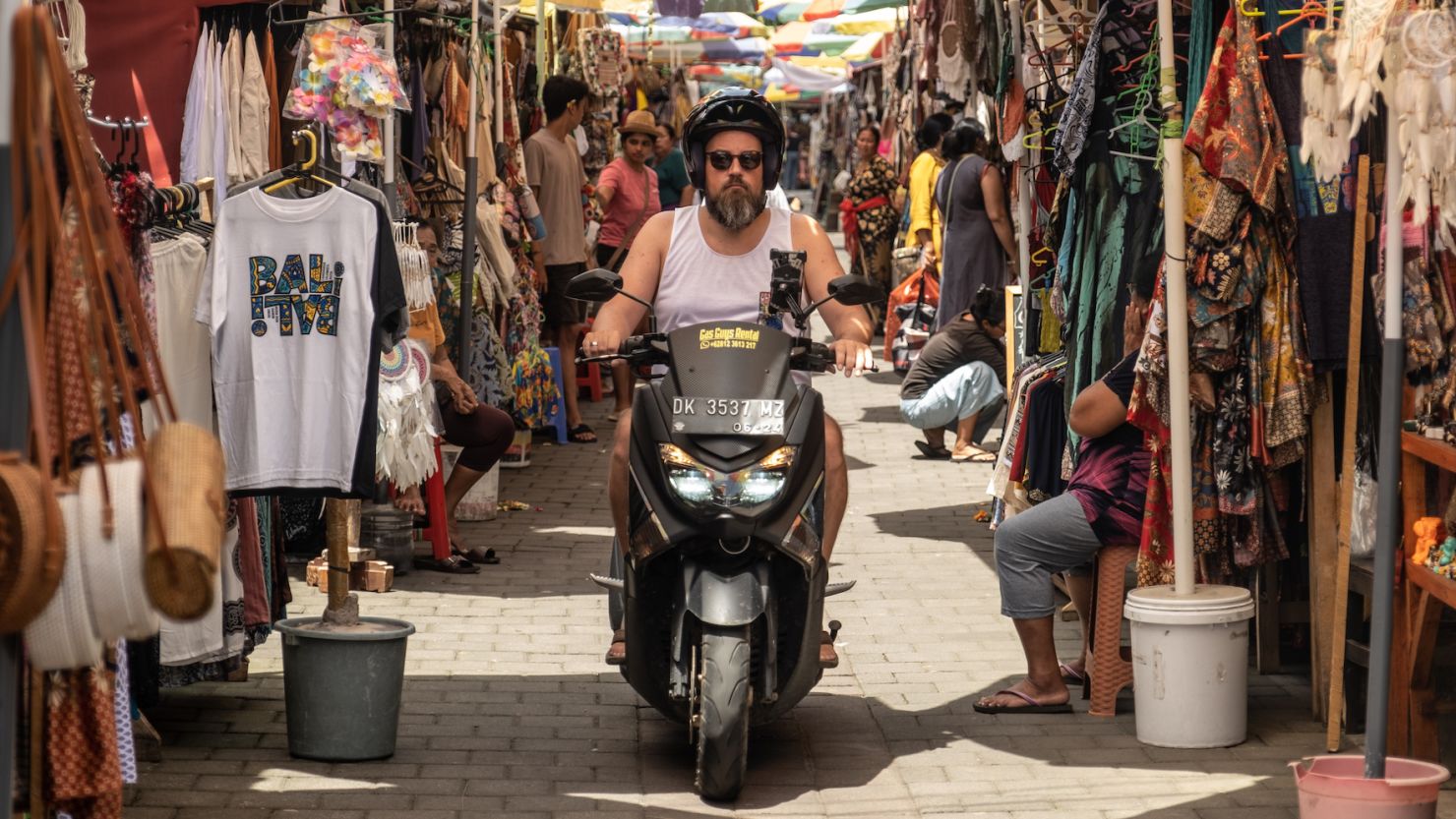Bali Travel Cost 2025: Budget Breakdown and Estimates


Are you dreaming of a captivating vacation in Bali, often referred to as the “Island of the Gods”?
Planning for such an incredible journey inevitably involves understanding the Bali travel cost. While Bali might seem like a distant, exotic paradise, it’s a remarkably diverse destination that caters to every type of traveler, from budget backpackers to luxury seekers. Despite its relatively small size, Bali offers an astonishing array of experiences, including stunning natural attractions, hundreds of ancient temples, beautiful villas nestled amidst lush landscapes, towering waterfalls, vibrant green rice terraces that stretch as far as the eye can see, epic sunsets that paint the sky with fiery hues, and pristine white sand beaches ideal for relaxation and water sports.

The total Bali trip cost is highly variable, influenced by several key factors. Your itinerary will significantly impact expenses; for instance, exploring the cultural heartland of Ubud will differ from the bustling beach towns of Seminyak or Canggu. Your personal travel style, whether you prefer ultra-luxury or budget-conscious adventures, plays a crucial role. The duration of your stay also directly affects costs, as does your specific plans for activities, dining, and shopping.
In this comprehensive guide, we will meticulously break down the estimated costs for flights, accommodations, local transportation, attractions, food and drinks, and even miscellaneous spending. We’ll also delve into strategies for how to save money during your trip to Bali, ensuring you make the most of your budget without compromising on unforgettable experiences.

Don’t forget to check our full guide about 📍 Bali . Best food, restaurants, Yoga, Party and sunset drinks .
📍 Uluwatu 📍Canggu 📍Seminyak 📍Ubud 📍.
Just use the search function 🔎 on the website for the best results! Type here to search… Search
How Much Is a Trip To Bali?
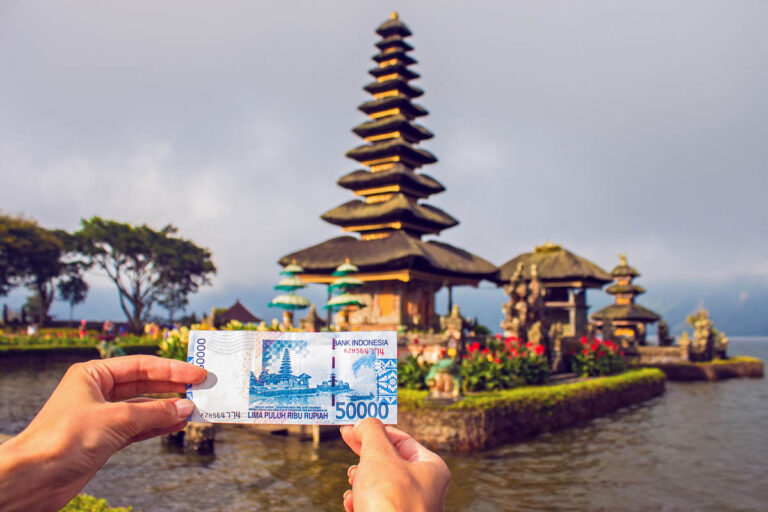
Determining the exact cost of a trip to Bali can be challenging, as it varies widely depending on individual preferences and the time of year you choose to visit. However, a general estimate for a comfortable trip for one person might start from $850, excluding luxury splurges. This figure can escalate quickly if you opt for peak season travel or higher-end experiences.
Air Costs
Flight ticket prices to and from Bali will often represent the single largest expenditure in your travel budget. To significantly lower this cost, it’s highly advisable to avoid traveling during popular holidays such as Christmas and Easter, or during the island’s peak season, which typically runs from July to August. During these times, demand surges, leading to considerably higher prices for airfare and accommodation. The best time to find more affordable flights is usually during the low season.
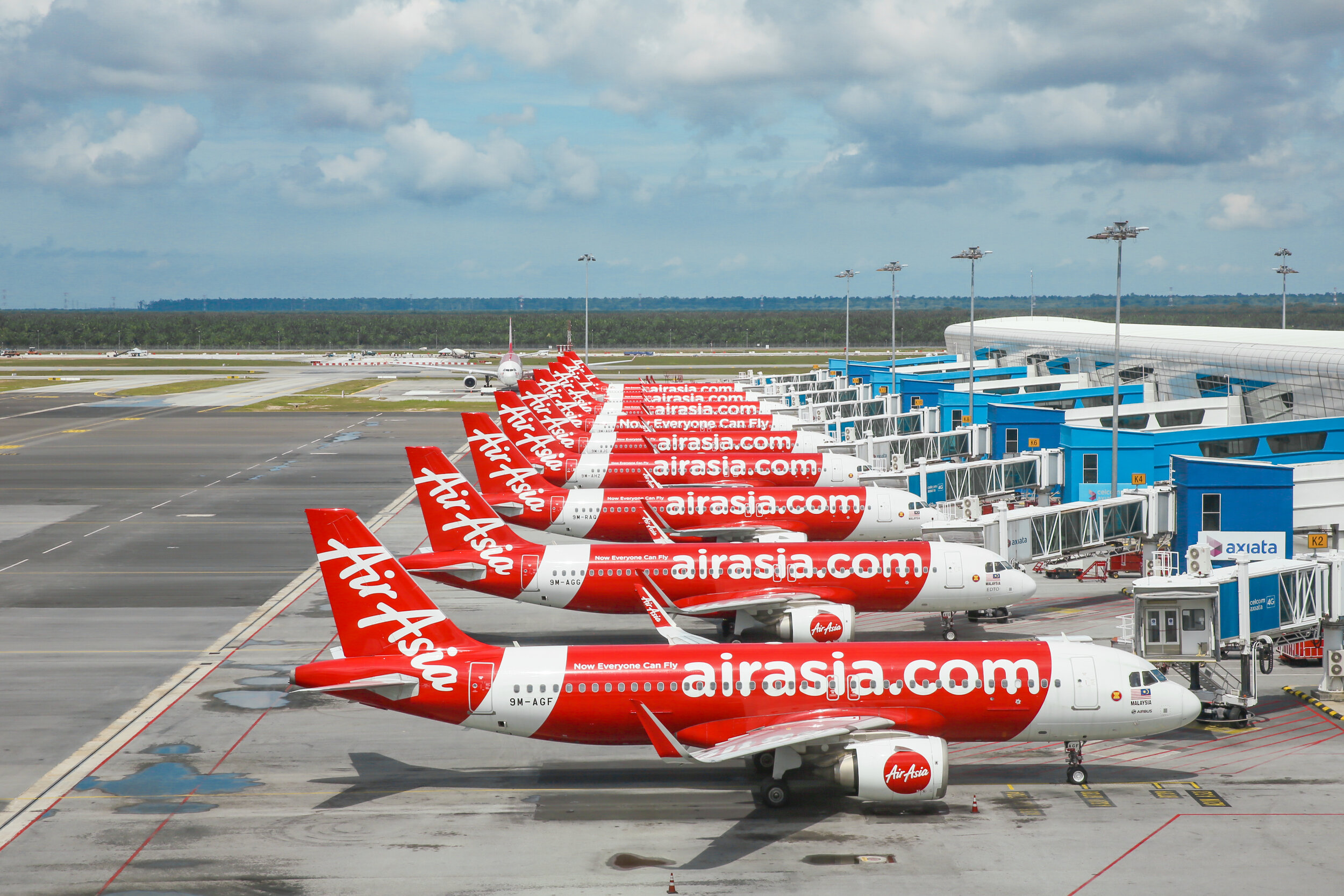
When traveling from distant locations like the United States or Canada, the journey to Bali, Indonesia, involves a considerable distance. Since there are currently no direct flights to Ngurah Rai International Airport (also known as Denpasar Airport), travelers will need to explore different carriers and itineraries, often involving layovers. A common strategy for budget-conscious travelers is to fly to major Southeast Asian hubs like Singapore, Bangkok, or Hong Kong, as flights to these cities can often be substantially cheaper. From there, you can easily find affordable connecting flights to Bali. This approach is particularly suitable for flexible travelers who are willing to invest some time in online searches, as it can result in significant savings on airfare. Remember to invest in travel insurance to safeguard your trip against unforeseen circumstances, which can offer great peace of mind.
Accommodations
Bali truly offers an unparalleled range of accommodation options, catering to every budget and preference. From a single bed in a bustling shared hostel room to world-class luxury villas and hotels boasting breathtaking jungle views and stunning infinity pools, there’s something for everyone.

If you’re looking for a comfortable 3-star hotel in a central location, you should budget for approximately $80 a night. However, this average price can easily deflate or inflate depending on your desired travel style and the time of year you visit. Many accommodations, regardless of price point, offer the convenience of free Wi-Fi connection, a standard amenity across the island.
Below are a couple of recommendations to give you a clearer idea of what to expect and how to budget. It’s also a smart financial move to apply for a credit card that does not charge foreign exchange fees before you depart, as this can save you a considerable amount on transactions abroad.
Luxury Villas and Hotels
If you’ve ever dreamt of indulging in a luxurious vacation, Bali is truly the perfect time to make that dream a reality. The island is renowned for its abundance of elegant villas and resorts, offering unparalleled comfort and stunning aesthetics. While renting these luxury accommodations can be quite expensive, especially during peak season, strategic planning and the use of certain credit cards can help you save.

For American citizens, investing in a Marriott Bonvoy Brilliant American Express Card is highly advisable. This card often comes with attractive benefits, such as earning a substantial number of points and welcome bonuses that can be redeemed for future stays or even cash back, effectively lowering your overall travel cost.
Some of the most popular luxury hotels and villas in Bali include Ametis Villa (Canggu), known for its serene privacy; W Bali (Seminyak), famed for its vibrant atmosphere and beachfront access; and Viceroy Bali (Ubud), offering breathtaking views of the jungle and a tranquil escape. During the low season, you might even find exceptional best deals on these high-end properties, allowing you to experience luxury for lower prices.
Hostels

For travelers seeking affordable accommodation during their stay in Bali, hostels are an excellent choice. While dormitory beds can be found for as little as $8 per night, you can often secure a private room within a hostel for around $20 a night, offering a good balance of privacy and budget-friendliness. Some of the most common and highly-rated hostels in Bali include M Boutique Hostel (Seminyak), known for its stylish design; Wayan Family Homestay II (Ubud), offering a more local, home-like experience; and The Jungle House (Canggu), popular among surfers and digital nomads. Hostels are particularly popular during the rainy season or wet season when fewer tourists translate to more availability and often lower prices.
Midrange Hotels

Bali boasts numerous excellent mid-range hotels that strike a perfect balance between comfort, location, and affordability. These establishments are often situated in prime areas, providing convenient access to attractions, and are well-equipped with amenities such as swimming pools, on-site restaurants, and complimentary Wi-Fi.
The prices for midrange hotels can vary depending on their size, the duration of your stay, and the specific amenities offered. On average, you can expect to pay approximately $100 per night. These options are particularly appealing during the shoulder season, when you can enjoy relatively good weather without the inflated prices of the peak season.
Want to know more about Bali? Read more: What to do in Bali ? , Best beach clubs in Bali , Best traditional food Bali , Best beaches Bali , Best diving Bali
Homestays
If a more authentic, local experience with a bed and breakfast feel is what you’re after, Bali’s homestays are a fantastic and affordable option. With a homestay, you’ll typically reside in a private room on a local family’s property. Such properties are known for their warm, homier atmosphere and often include free breakfast, providing excellent value for money. You can expect to pay approximately $30 a night for a comfortable homestay experience. Popular choices include Wita Homestay (Canggu), offering a glimpse into local life; Nadialit (Seminyak), known for its friendly hosts; and Ujung Ubud Guesthouse (Ubud), providing a tranquil retreat amidst nature. Opting for a homestay is a great time to connect with local culture and save on accommodation costs, especially when aiming for lower prices.
Local Transportation

One of the most significant considerations for your Bali travel cost, and potentially one of the biggest hassles you might encounter, is local transportation. This is primarily due to the limited public transportation infrastructure. While transfers can be quite costly, this shouldn’t deter you from having a memorable vacation. All it requires is careful planning and budgeting.
Motorbike
Renting a motorbike is often the most affordable and convenient way to get around Bali. It offers unparalleled flexibility, allowing you to navigate the island’s winding roads and reach hidden gems. However, it can be a bit dangerous for anyone without prior motorbike riding experience. Despite it not always being a strict requirement for renting one, you will need to have an international driver’s license.

This is because police often conduct regular check-ups, and having the correct documentation can save you from fines and inconvenience. Renting a motorbike typically costs between $20 to $30 for one week, making it incredibly economical. Ensure you ask around for a reputable and reliable renter, and always thoroughly inspect the bike for any existing damages or scratches before agreeing to avoid being blamed for them later. This is particularly useful during the dry season when roads are less slippery and clear skies make riding more pleasant.
However, if riding a motorbike isn’t your preference or you lack the experience, expect to pay significantly higher amounts to get around Bali, as you will likely need to hire a local driver. While ride-hailing apps like Grab and Gojek are available, there have been documented instances of tension and even violence between these app-based drivers and traditional taxi drivers in certain areas. Consequently, some zones may be designated as “no-go” areas for ride-hailing services. At times, some drivers might even cancel or take off, leaving you stranded if they perceive a situation as unsafe. This makes app-based services less secure and reliable for transit in Bali, particularly in more remote areas.
Taxi
Taxis are very popular in bustling areas like Canggu, Seminyak, and Kuta. However, just like in many other tourist destinations, taxi drivers in Bali can sometimes attempt to overcharge clients. To avoid this, always use reputable taxi companies (look for Blue Bird taxis, generally considered reliable) and insist that the meter is always turned on.

Whenever you plan to travel a significant distance or embark on a full-day excursion, it is highly recommended that you hire a private driver. Most private car hires will cost around $50 or more for a full day, depending on the itinerary and duration. You are certainly free to haggle for a better price, but keep in mind that this remains a more expensive form of travel in Bali compared to motorbikes. You can significantly save on transportation costs by basing yourself in either one or two areas during your entire vacation in Bali, minimizing long-distance transfers. Additionally, joining group tours can help distribute the cost of transportation among participants.
Important Tip: When you find a driver you like and trust, consider making special arrangements for multiple-day trips at discounted rates. Private drivers are usually happy to secure repeat business and will likely offer you a good discount for consistent bookings. This offers a great time to explore the island without the hassle of navigating.
Learn More about Bali Travel Guide
Don’t forget to check our full guide about 📍 Bali . Best food, restaurants, Yoga, Party and sunset drinks .
📍 Uluwatu 📍Canggu 📍Seminyak 📍Ubud 📍.
Just use the search function 🔎 on the website for the best results! Type here to search… Search
I wrote more than 70 articles about the Island of Bali :
Is it safe to travel to Bali ?
AND WAY MORE !
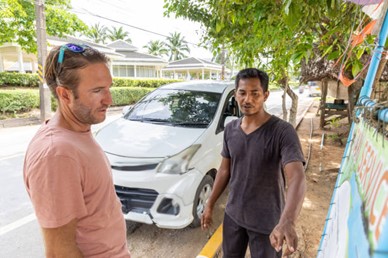
Attractions
Bali boasts some of the world’s most popular and visually stunning destinations. From its iconic rice paddies to its pristine beaches, there’s no shortage of things to see and do. While much of Bali’s natural beauty is free to explore, there are certain spots where you’ll need to pay a small entrance fee to experience them fully. For example, exploring the magnificent Tegalalang rice fields typically requires a payment of around 15,000 IDR.

Other attractions where you’ll encounter a small access fee include the numerous ancient temples scattered across this Indonesian island. Some of the most common and revered ones include Tirta Empul, known for its holy spring water; Uluwatu Temple, perched dramatically on a cliff overlooking the ocean; Tanah Lot, a stunning sea temple; and Goa Gajah (Elephant Cave), an archaeological site with ancient carvings. You will also have to pay a small fee to access some of the beautiful beaches like Legian, Nusa Dua, and Sanur beaches. Some of these beaches experience great waves, making them top surfing spots and ideal for water sports. During the dry season, with its clear skies and little rain, these outdoor activities are particularly enjoyable.
Most of Bali’s top attractions are quite affordable to access. For instance, if you decide to rent a motorbike, the entrance fees themselves won’t break the bank. However, you will need to factor in parking costs and petrol prices, which can add up if you plan extensive daily travel.
I live in Bali and wrote more than 70 articles on the Island :
Looking for more information about Bali?

To give you a clearer idea of how much you’ll spend on various attraction sites, here are the approximate entrance fees for some of Bali’s major tourist attractions (prices are subject to change but provide a good estimate for 2025):
- Visiting Waterfalls in Bali: Price range from 15,000 to 50,000 IDR.
- Ubud Monkey Forest Entrance Fees: Rates range from 80,000 to 100,000 IDR.
- Different Temples Access Fees: Rates range from 30,000 to 100,000 IDR.
- Access to different Beaches in Bali: Rates range from Free to 10,000 IDR.
Beyond these basic entrance fees, there are activities such as diving in Bali, hiking up volcanoes like Mount Batur, or booking guided tours, which typically cost significantly more.
Are you a scuba diving enthusiast and planning to visit Bali? Then you must allocate a portion of your budget for this incredible experience, as Bali is truly a scuba diving paradise, offering some of the best sites in Southeast Asia. On average, a day of scuba diving, which might include two to four dives, costs between $100 and $200. This cost typically covers equipment rentals, transportation to and from the dive sites, and often lunch. The best time for diving, with optimal visibility, is during the dry season.

Other top attraction activities that many people often forget to budget for when planning their Bali trip include day passes at other hotels where you can access their luxurious beach clubs and pools. Many hotels also offer popular yoga classes, which are a great time to subscribe to for wellness and relaxation during your vacation.

Foods and Drinks
You can never embark on a vacation without accounting for foods and drinks. However, much like accommodation, the prices for food and beverages in Bali vary significantly depending on your preferences. For instance, if you opt for Western-style foods found in tourist-centric restaurants, you could easily spend close to three times more compared to if you indulge in authentic street food or local “warungs” (small, family-owned eateries), where a delicious and filling meal can cost a mere $2. Most travelers find a balance, enjoying both Western comforts and local culinary delights.

For an average day, assuming your breakfast is typically served at the villa, hostel, or hotel you’ve booked (which is a common inclusion), you might budget around $5 for lunch and potentially up to $20 for dinner if you choose a mid-range restaurant. This totals approximately $25 per day, including soft drinks. This can be easily achieved if you stick to local eateries, especially during the low season when you might find best deals.

If you plan to include alcoholic beverages in your budget, you’ll need to allocate additional funds. Beers, particularly local brands like Bintang, are considerably less expensive than wine or cocktails in Bali. If you do prefer cocktails, keep an eye out for “two-for-one” specials, which are quite common and can help you save money.
Don’t forget to check our full guide about 📍 Bali . Best food, restaurants, Yoga, Party and sunset drinks .
📍 Uluwatu 📍Canggu 📍Seminyak 📍Ubud 📍.
Just use the search function 🔎 on the website for the best results! Type here to search… Search
Random Spending
It’s hard to go on a vacation and not fall in love with a few souvenirs to commemorate your trip. While Bali isn’t primarily known as a shopping mecca for high fashion, you will undoubtedly come across charming local crafts, textiles, and unique items you’ll want to carry back home. Some of the most popular souvenirs for travelers to Bali include local coffee, aromatic teas, and beautiful Batik Sarongs. Despite being available in varying qualities, none of these are particularly costly unless you intend to purchase copious amounts.

Massages are an integral part of the Bali experience and are incredibly popular. Many travelers indulge in massages, with some even opting to have one daily, given their affordability. While this might not be the case for every visitor, it’s reasonable to assume you’ll want to have this experience at least once or twice a week. Basic Balinese massages cost approximately $10 an hour, offering incredible value. Factoring in massages and a bit of random souvenir shopping, you might budget up to $100 for these miscellaneous indulgences. Always ensure you negotiate for a good price at local markets, as tourists are sometimes quoted inflated rates. This is especially true during the shoulder season or low season when vendors are more keen to offer lower prices.
I live in Bali and wrote more than 70 articles on the Island :
Looking for more information about Bali?
- What to do in Bali with itinerary
- Best studios and yoga retreats in Bali
- Best sunset bars in Bali
- Best traditional food in Bali
- Best surf beaches in Bali
- Best meditation in Bali
Just type the topic you are looking for in the search bar
ADDITIONAL TIPS:
HOW TO SAVE MONEY DURING YOUR TRIP TO BALI
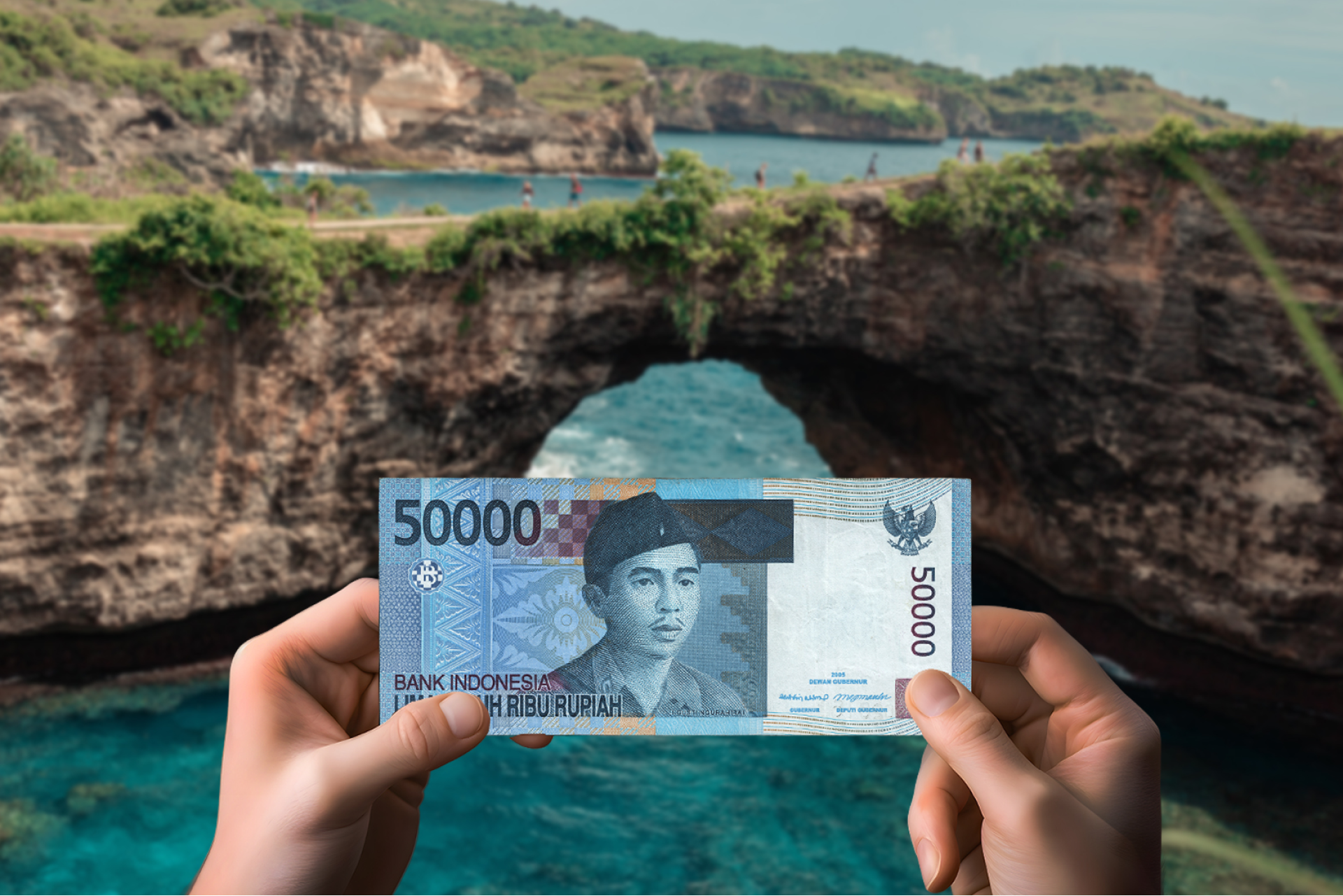
Saving money during your trip to Bali doesn’t mean you have to compromise on the experience. With some careful planning and smart choices, you can truly enjoy this beautiful destination without breaking the bank. Here are some essential tips to help you save money while traveling in Bali, ensuring you get the best deals possible.
Travel During the Offseason

Understanding Bali’s distinct seasons is key to saving money. Bali’s peak season for tourism typically runs from July to August and also during the Christmas and New Year period, which coincides with many international school holidays. During these times, demand is at its highest, leading to significant increases in prices for flights, accommodations, and even tours. Consider visiting during the low season, which generally spans from January to March and from November to early December. These months constitute the rainy season or wet season, but don’t let the name deter you. While you might experience more rainy days, downpours are often brief and intermittent, followed by periods of sunshine. The main advantage is that prices for accommodations and activities are generally much lower, and you’ll encounter significantly fewer crowds. The best time for a balance of good weather and lower prices is often the shoulder season, specifically April, May, September, and October. During these months, the weather typically improves with little rain, crowds remain manageable, and prices are more budget-friendly.
Accommodation Choices

Opting for budget-friendly accommodations such as guesthouses, hostels, or homestays instead of luxurious resorts can lead to substantial savings. These options often provide a more authentic cultural experience and a chance to interact with locals. Furthermore, research and book your accommodation in advance, especially if your travel dates fall outside the extreme low season, to take advantage of early booking discounts and promotional deals. You might find some of the best deals during the low season.
Local Transportation Savvy

As discussed, utilizing local transportation options is crucial for saving money. Motorbike rentals are incredibly cost-effective, but only if you are confident and experienced in riding one safely. Alternatively, consider using ride-hailing apps like Gojek or Grab for short distances, or local “bemos” (minivans) if available for specific routes. These options are far cheaper than relying solely on taxis or private cars. This will not only save you money but also provide a more authentic experience of Bali’s bustling local life. The dry season offers ideal conditions for motorbike travel.
Embrace Local Cuisine

Enjoying meals at local warungs (small family-owned restaurants) and street food stalls can be dramatically cheaper than dining at upscale tourist restaurants. Not only is the food incredibly delicious and fresh, but it’s also a fantastic way to immerse yourself in the local culture and savor authentic Balinese flavors. Look for places frequented by locals to ensure quality and authenticity. This is a great time to explore new culinary experiences.
Bargain at Markets

When shopping at local markets and with street vendors, don’t be afraid to haggle. Bargaining is a common and expected practice in Bali, particularly in tourist areas. You can often negotiate prices down significantly from the initial quote, securing items for a much lower price. Always be polite and respectful, and have fun with the process!
Free and Low-Cost Activities

Bali offers an abundance of free and low-cost activities that are just as, if not more, rewarding than expensive tours. This includes visiting numerous ancient temples (many have small entrance fees, but some are free to view), exploring the mesmerizing rice terraces, embarking on scenic hikes through lush landscapes, and simply enjoying the island’s beautiful beaches. Research these options and plan your itinerary around them to save on expensive tours and attractions. The best month for outdoor activities with clear skies is during the dry season.
Bring Your Own Bottle (BYOB – Water)

Bali’s tropical climate means you’ll go through drinks quickly. To save on constantly buying bottled water, bring a reusable water bottle and refill it from large, affordable water jugs available at convenience stores or your accommodation. This is an eco-friendly and budget-friendly habit.
Avoid Unnecessary Tours

AVOID THIS
While some tours and activities are undoubtedly worth the expense for their unique experiences (like a sunrise trek up Mount Batur or a diving excursion), others may not offer the same value. Be selective about the tours you book and consider exploring many attractions independently using local transportation. This provides more flexibility and often leads to unexpected discoveries.
Exchange Money Wisely
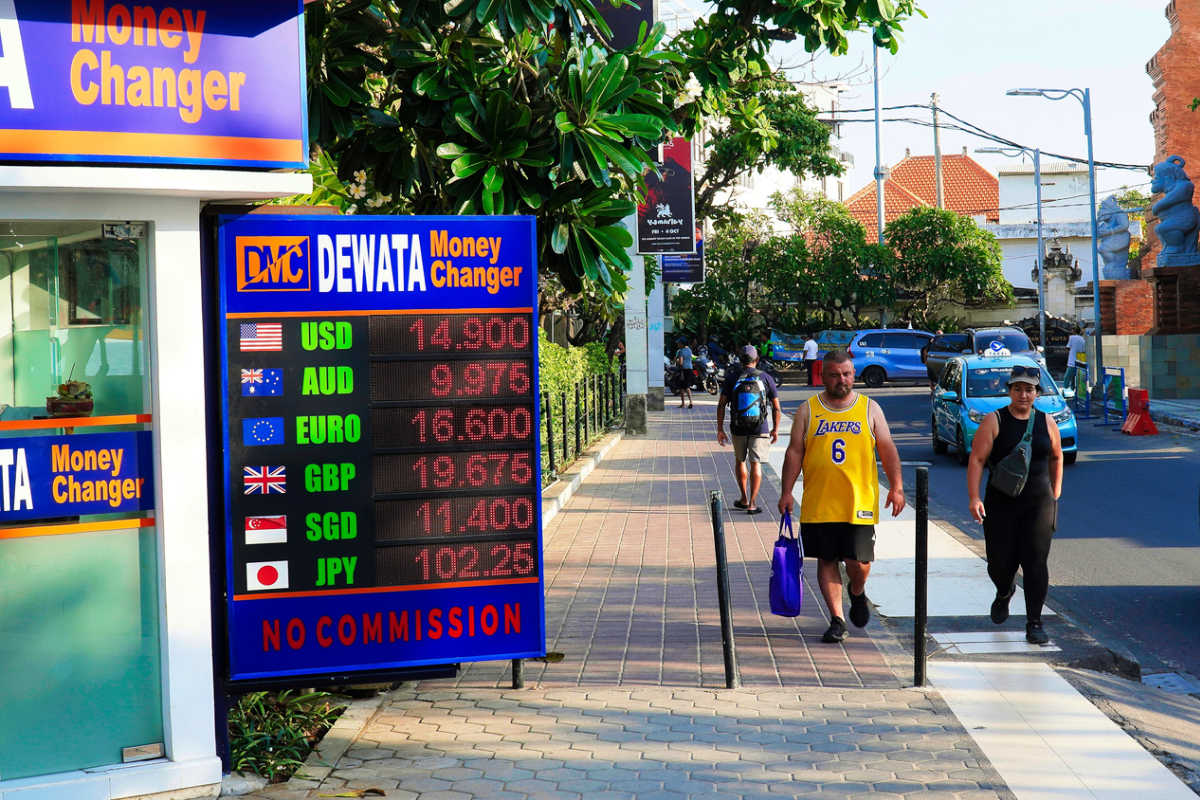
Be mindful of where you exchange your currency. Avoid exchanging money at Ngurah Rai International Airport (also known as Denpasar Airport) or in highly touristy areas, as these places often offer unfavorable exchange rates. Instead, use ATMs to withdraw cash in the local currency (Indonesian Rupiah, IDR), as this will typically give you a better exchange rate. Inform your bank of your travel dates beforehand to avoid any card blocks.
Use Local SIM Cards

Instead of relying on expensive international roaming, purchase a local SIM card for your phone upon arrival. This will allow you to stay connected, use navigation apps, and communicate at a much lower cost. Packages are typically very affordable and can be purchased directly at the airport or small shops around the island.
Don’t forget to check our full guide about 📍 Bali . Best food, restaurants, Yoga, Party and sunset drinks .
📍 Uluwatu 📍Canggu 📍Seminyak 📍Ubud 📍.
Just use the search function 🔎 on the website for the best results! Type here to search… Search
By diligently following these tips, you can make your trip to Bali significantly more affordable without missing out on the incredible experiences this destination has to offer. You’ll be able to enjoy the natural beauty, cultural richness, and vibrant atmosphere of Bali while keeping your budget in check, even during less popular travel dates.
Understanding Bali’s Seasons and Their Impact on Cost
Bali experiences two main distinct seasons: the dry season and the wet season, which is also known as the rainy season. Each has its pros and cons in terms of weather, crowds, and prices.
The dry season typically runs from April to October. This is widely considered the best time of year to visit Bali for ideal weather conditions. You can expect plenty of sunshine, clear skies, lower humidity, and minimal rainfall. The average temperature during this period hovers around 27∘C to 30∘C (81∘F to 86∘F), making it perfect for outdoor activities like hiking, exploring temples, and relaxing on the beach. This period also includes Bali’s peak season (July and August), when the island is bustling with tourists, and prices for flights and accommodation are at their highest. If your priority is perfect weather and vibrant social scenes, this is the great time to visit, but be prepared for higher prices and more crowds. Popular water sports like surfing, snorkeling, and diving are at their prime during the dry season due to excellent visibility and calm waters.
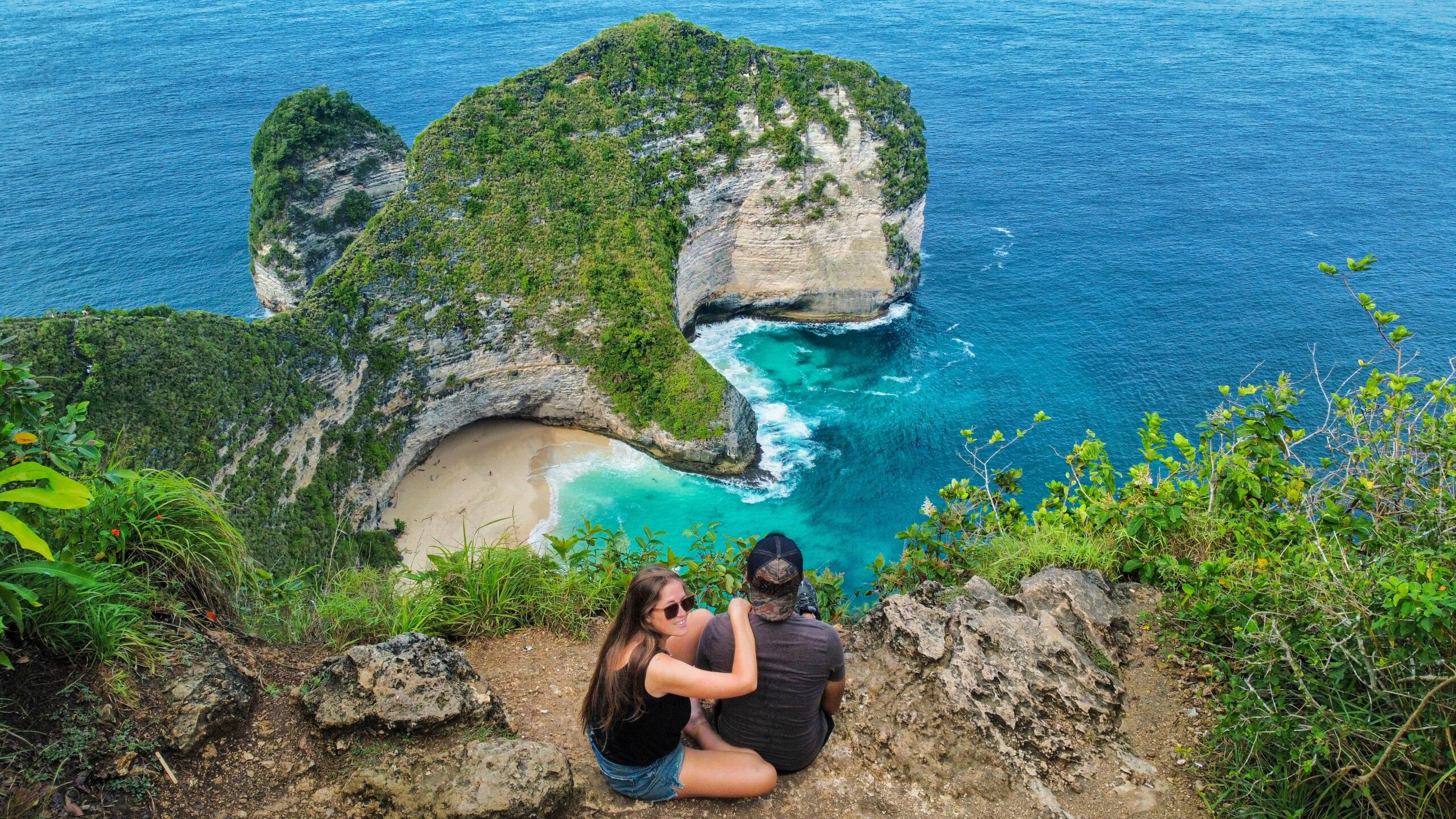
Conversely, the wet season (or rainy season) usually spans from November to March. This period is characterized by higher humidity and more frequent rainfall, with January being typically the wettest month. However, it’s important to note that “rainy season” doesn’t mean non-stop downpours. Showers often come in short, intense bursts, usually in the afternoon, leaving plenty of time for activities in the mornings and evenings. The average temperature remains warm, similar to the dry season, around 26∘C to 29∘C (79∘F to 84∘F). The main advantage of visiting during the wet season is significantly lower prices for everything from flights to luxury villas. You’ll also experience fewer crowds at popular attractions, leading to a more relaxed and authentic experience. For budget travelers seeking the best month for lower prices, aiming for February or November (outside of Christmas holidays) can yield excellent results. While there might be more rainy days, the island is lush and green, and waterfalls are at their most impressive. This is also the low season, meaning you’re more likely to find best deals on everything.

The shoulder season (April, May, September, and October) offers a fantastic compromise. The weather is generally pleasant with little rain, gradually transitioning between the dry and wet seasons. You’ll still enjoy plenty of sunshine and comfortable temperatures, but with significantly fewer crowds than the peak months. Prices are also more reasonable than the high season, making it an ideal time for many travelers seeking a balance of good weather and value. This is often considered the best time to visit Bali for a well-rounded experience without the extremes of either high demand or heavy rain.
The worst time to visit, purely from a crowd and cost perspective, would be during the major school holidays of Western countries, particularly July and August, and the Christmas/New Year period. While the weather is generally excellent, the sheer volume of tourists leads to crowded attractions, booked-out accommodations, and inflated prices across the board. If you prioritize tranquility and budget, these are travel dates to avoid.
Ngurah Rai International Airport (Denpasar Airport) and Travel Logistics
Your journey to Bali will almost certainly begin and end at Ngurah Rai International Airport (DPS), commonly referred to as Denpasar Airport. Located in Tuban, Kuta, just south of Denpasar, it is the second busiest airport in Indonesia and a major gateway to Southeast Asia. The airport is well-equipped with modern facilities, including currency exchange services, ATMs, various dining options, duty-free shops, and car rental agencies.
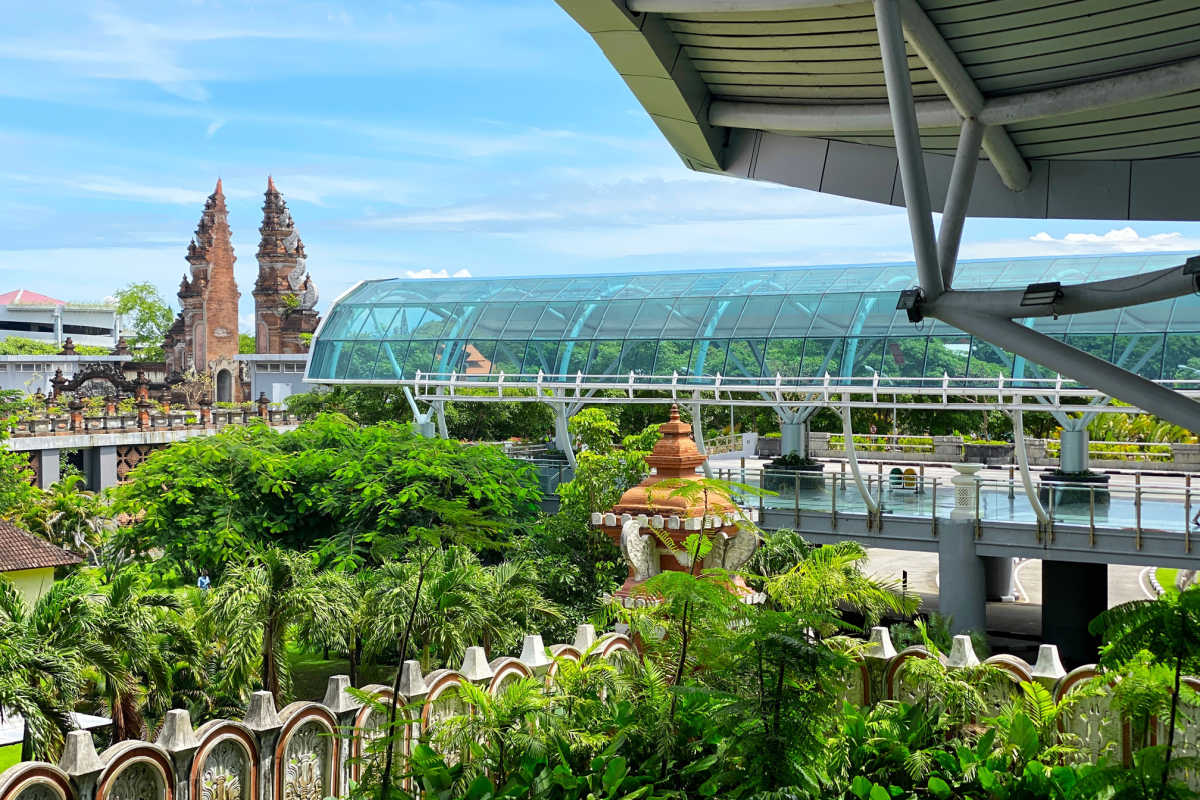
Upon arrival, international travelers will go through immigration and customs. It’s advisable to complete your Electronic Customs Declaration (ECD) online before arriving to expedite the process. For many nationalities, a Visa on Arrival (VoA) is available, costing around IDR 500,000 (approx. $30 USD) for a 30-day stay, which can be extended once.
Transportation from Denpasar Airport can be managed via official airport taxis, hotel transfers, or ride-hailing apps like Grab and Gojek. While these apps offer convenience, be aware of potential restrictions in certain areas due to tensions with traditional taxi drivers. Pre-booking a private transfer with your accommodation or a reputable driver is often the smoothest option, especially after a long flight. During peak season, waiting times for taxis can be longer, so pre-arrangement is particularly beneficial.
Conclusion
There you have it! This expanded guide should provide a much clearer approximation of how much you can expect to set aside for your entire Bali trip, whether it’s a one-week adventure or a longer stay. When traveling with two people, you will generally need to double the estimated costs for airfare, transportation, food, attractions, and most activities, as these are typically per-person expenses. However, the accommodation cost often remains the same if you are traveling as a couple and sharing a room or villa.

While Bali is widely known and often marketed as a luxury destination, this comprehensive breakdown clearly demonstrates that a visit to the Island of Gods does not have to come with a hefty price tag. You need not worry if you are a budget traveler or backpacker; you can absolutely have a memorable and enriching vacation if you are flexible enough with your travel dates and diligently abide by the advice and tips provided above. By choosing the best time to visit (such as the shoulder season or low season for lower prices and fewer crowds), embracing local transportation, indulging in authentic Balinese cuisine, and taking advantage of the island’s many affordable attractions, your dream Bali getaway is well within reach, even with a modest budget. Remember, Bali offers incredible experiences regardless of whether you’re seeking luxury or the best deals amidst its distinct seasons.

Don’t forget to check our full guide about 📍 Bali . Best food, restaurants, Yoga, Party and sunset drinks .
📍 Uluwatu 📍Canggu 📍Seminyak 📍Ubud 📍.
Just use the search function 🔎 on the website for the best results! Type here to search… Search
I wrote more than 70 articles about the Island of Bali :
Bali on a budget , Is it safe to travel to Bali ? , Best temples in Bali , Cheapest time to visit Bali , Best waterfalls in Bali , and more!

WHO AM I ?
Hello !
I am Eric, a French Australian citizen based between Australia, Asia and Bali an I love to travel and experience the world. I generally like outdoor activities, wellness, great food and venues , party and real local adventures ! I am a Yoga practitioner and fitness lover
I created this blog because I love to travel and I want to share my experiences with others. I’ve been traveling since I was a child, and I’ve been to over 50 countries. I’ve seen some amazing things and met some amazing people, and I want to help others experience the same things.
I believe that travel is one of the best ways to learn about the world and about yourself. When you travel, you’re forced to step outside of your comfort zone and experience new things. You learn about different cultures, different religions, and different ways of life. You also learn about yourself, your strengths, and your weaknesses.

Uyuni Salar, Boliva
Let’s connect together !
I hope that my travel blog will inspire others to travel and to see the world. I also hope that it will help people to learn about different cultures and to become more open-minded.

Taj Mahal, Agra, India

